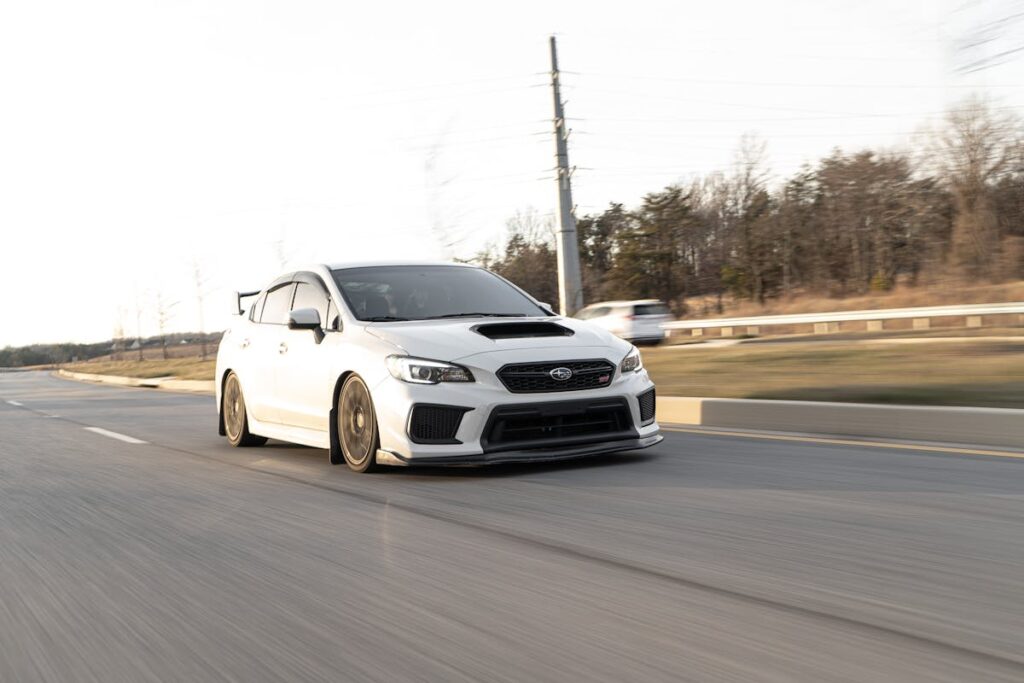The role high-profile accidents have played in shaping public perception and legislative action around car safety is undeniably significant. From James Dean’s fatal collision to the controversies surrounding Tesla’s autopilot, these incidents have triggered a reevaluation of the existing safety protocols, vehicle designs, and the incorporation of advanced technologies. They have also raised critical questions about driver’s responsibilities and underscored the need for continuous reform in the automotive industry. This discussion will explore these accidents in detail, and the profound impact they’ve had on our understanding and expectations of car safety.
James Dean’s Fatal Collision
In the annals of automotive history, the fatal collision of James Dean serves as a chilling reminder of the brutal reality of car accidents. On September 30, 1955, Dean, an acclaimed actor and cultural icon, met a tragic end in a high-speed car crash, leaving behind a legacy etched in the hearts of millions.
Dean’s legacy, however, extends beyond his contributions to the film industry. His accident served as a catalyst for significant safety reforms in the automotive industry. Prior to his death, considerations for safety had been grossly neglected, with the focus majorly on aesthetics and performance. Dean’s fatal collision sparked a public outcry, pushing car manufacturers to reevaluate their priorities and implement safety measures.
These reforms included the introduction of safety features like seatbelts, crumple zones, and later, airbags. Laws were enacted to enforce the use of these safety measures and regulations were introduced to control speed limits, which had been a contributing factor to Dean’s accident. The reforms transformed the automotive industry, with Dean’s tragic end serving as a somber reminder of the importance of prioritizing safety over speed and aesthetics.
Jayne Mansfield’s Rear-End Tragedy
Marked by tragedy, the fatal accident involving Jayne Mansfield, a Hollywood sex symbol and actress of the 1950s, is yet another high-profile incident that influenced the course of car safety regulations. On June 29, 1967, Mansfield’s car collided with the rear end of a tractor-trailer on a foggy highway in Louisiana. The car slid under the truck, and the entire top was sheared off, killing Mansfield instantly along with two other adult passengers.
This horrifying incident, part of Mansfield’s legacy, garnered public attention and cast a spotlight on the critical issue of rear-end safety. The accident highlighted the dangerous gap in height between cars and the back of large trucks, which led to the widespread adoption of a safety device named ‘Mansfield bar,’ or more formally, the ‘underride guard.’
The Mansfield bar is a strong steel framework that hangs from the back of a truck or trailer to prevent a car from sliding underneath in a rear-end collision. This tragic incident served as a catalyst for vehicle safety enhancements and underscored the need for continuous improvements in the industry’s safety standards.
The Impact of Princess Diana’s Crash
While the tragic accident involving Jayne Mansfield led to significant advancements in rear-end safety, another high-profile accident further underscored the importance of automotive safety measures. In 1997, the world was shocked by the death of Princess Diana in a car crash in Paris, France. This incident, amplified by intense media coverage, played an instrumental role in shaping public perception of car safety.
The circumstances surrounding Princess Diana’s crash highlighted the importance of seat belt use, speed control, and the dangers of drunk driving. Her chauffeur had a high blood alcohol level, and neither Princess Diana nor her companion, Dodi Fayed, were wearing seatbelts. The crash, involving high speed, resulted in fatalities that could potentially have been averted with appropriate safety measures.
The global public mourning that followed her death, facilitated by widespread media coverage, brought the issue of car safety into sharp focus. It spurred discussions on the necessity of seatbelt use, responsible driving, and the role of the paparazzi in endangering public safety. The impact of this accident was profound, prompting a reconsideration of safety protocols and contributing to a shift in societal attitudes towards automotive safety.
The Infamous Paul Walker Accident
Shifting our focus to another major incident, we explore the infamous car accident that claimed the life of Paul Walker, a well-known actor from the “Fast & Furious” franchise. This unfortunate event brought a spotlight onto the potential dangers of car modifications, a prevalent theme throughout the movie series.
The car involved, a Porsche Carrera GT, was well-known for its powerful performance capabilities, amplified by various enhancements. A notable feature was its lack of electronic stability control, a safety measure that, had it been present, might have altered the tragic outcome.
Walker’s untimely demise also highlighted the celebrity influence on public perceptions of car safety. His association with high-speed chases and daring stunts in film arguably glamorized reckless driving. However, his tragic end served as a stark reminder of the potential consequences of such behavior.
In the wake of the accident, a renewed emphasis was placed on the importance of safety features in performance cars. Manufacturers and consumers alike became more aware of the balance between power and safety, a shift that certainly influenced the car industry’s approach to modifications and overall safety protocols.
Tesla’s Autopilot Controversy
In shifting our focus to Tesla’s Autopilot controversy, we examine two critical aspects: the functionality issues of the autopilot system and their subsequent impact on public perception. Particularly, there have been various incidents involving Tesla vehicles that have raised questions about the safety and reliability of their autonomous driving technology. This discussion aims to objectively analyze these incidents, understand the technical complexities involved, and assess the influence of these events on the public’s view of Tesla and autonomous vehicles at large.
Autopilot Functionality Issues
Despite the technological advancements and the high safety ratings of Tesla vehicles, the company’s autopilot feature has been mired in controversy. The autonomous vehicle challenges faced by Tesla primarily revolve around the functionality of this autopilot feature. The system, designed to assist drivers in guiding and controlling the vehicle, has led to accidents due to various issues, raising driver oversight concerns.
One of the main issues is the system’s ability to adapt to dynamically changing environments and situations. While the autopilot can perform routine tasks such as lane-keeping and adaptive cruise control, it has been found lacking in handling complex and unpredictable scenarios. This raises questions about the system’s ability to guarantee safety in all situations.
Another critical issue involves the ambiguity about the driver’s role when autopilot is engaged. The system’s perception as ‘self-driving’ has led to misuse, with drivers relying too heavily on the technology, sometimes without keeping their hands on the wheel as recommended.
Impact on Public Perception

Numerous high-profile accidents involving Tesla’s autopilot have considerably shaped public perception both of the company and the broader concept of autonomous vehicles. Each incident not only highlights potential flaws within the system but also amplifies the issue of public safety, sparking an increase in public awareness on the matter. As news of these accidents pervade the media, the public’s initial excitement over autonomous vehicles has been replaced by a more cautious, sometimes skeptical, outlook.
The fallout from these incidents has also prompted a reconsideration of safety regulations. With each accident, lawmakers and regulatory bodies are compelled to reassess the adequacy of current laws governing autonomous vehicles. The goal is not only to protect the public but to guarantee that the march of technology does not outpace the capacity to regulate it effectively.
Furthermore, Tesla’s reputation as a pioneer in electric and autonomous vehicles has been somewhat tarnished by these controversies. The public’s perception of the brand has shifted, and there is growing concern about the company’s ability to guarantee the safety of its autopilot feature. This evolving perception is a potent reminder of how high-profile accidents can dramatically influence public opinion and shape the future of car safety.
Anton Yelchin’s Rollaway Incident
The tragic rollaway accident involving actor Anton Yelchin captured international attention, casting a spotlight on the often overlooked issue of car safety. Yelchin’s vehicle, a 2015 Jeep Grand Cherokee, was found to have a faulty gear selector that led to the actor’s untimely demise. This incident sparked a wave of concern and debate regarding safety regulations in the automobile industry.
A detailed analysis of the incident revealed that the gear selector’s design was inherently flawed. Its unconventional operation confused many drivers, making it easy to exit the vehicle while it was not properly parked. Yelchin’s vehicle was among the 1.1 million cars worldwide recalled by Fiat Chrysler due to this defect. Despite the recall, the tragedy underscored the need for more stringent safety regulations and the importance of timely communication of such issues to the public.
The aftermath of Yelchin’s incident was a watershed moment in the car industry. It led to an increased demand for more robust safety measures from automakers and regulators. It also emphasized the urgency of addressing design flaws to prevent such incidents in the future, thereby shifting public opinion towards prioritizing car safety.
Tracy Morgan’s Near-Fatal Collision
In June 2014, Tracy Morgan, a well-known comedian, was involved in a catastrophic collision that nearly ended his life. The incident had significant personal implications for Morgan, impacting his physical health and career trajectory for years following the accident. Post-accident, there were substantial changes made in the field of vehicle safety, which warrant further examination.
The Accident’s Details
Catastrophe struck on a fateful night in June 2014, when renowned comedian Tracy Morgan became the victim of a nearly fatal vehicular collision. While traveling on the New Jersey Turnpike, a Walmart truck, driven by an operator who had been awake for over 24 hours, collided with Morgan’s limousine bus. The impact was severe, causing a six-vehicle pile-up and resulting in the tragic death of comedian James McNair, a passenger in Morgan’s vehicle.
The crash investigation, led by the National Transportation Safety Board (NTSB), revealed that the truck driver’s fatigue and inability to react to slowing traffic were primary factors in the accident. The report further noted that Morgan and other passengers in the limousine were not wearing seat belts, exacerbating the injuries sustained.
Media coverage of the accident was extensive, with attention on Morgan’s condition and the circumstances of the crash. The event ignited public discourse about the safety of limousine buses and the need for stricter regulations on truck driving hours. The media’s focus on the crash investigation results further impacted public opinion, leading to increased demands for improved vehicle safety standards.
Impact on Morgan’s Life
Unquestionably, the near-fatal collision had a profound impact on Tracy Morgan’s life, both personally and professionally. The severity of the injuries he sustained required a lengthy and challenging recovery process, during which Morgan faced physical and emotional trials that greatly altered his perspective on life.
Morgan’s recovery was marked by strenuous physical therapy to regain his strength and mobility, and extensive cognitive rehabilitation to address the traumatic brain injury he suffered. The process was certainly taxing, yet Morgan’s resilience and determination were evident throughout. Professionally, the harrowing experience led to a major evolution in his comedy. The humor that once mainly revolved around playful absurdity subsequently evolved to include more introspective elements, reflecting his newfound appreciation for life and his personal transformation.
Though the accident’s consequences were severe, Morgan’s recovery journey and the evolution of his comedy have demonstrated his fortitude and adaptability in the face of adversity. It is a reflection of his strength that he not only survived such a devastating event but emerged from it with a renewed sense of purpose and a deepened comedic voice.
Safety Changes Post-Accident
Following the harrowing ordeal, Tracy Morgan’s life-altering collision brought to light the critical importance of vehicle safety standards. This tragic incident became a catalyst for change, prompting lawmakers to reevaluate and implement regulatory reforms concerning vehicle safety.
The accident emphasized the dire need for regulatory reforms in the trucking industry, specifically regarding driver fatigue. Legislation was introduced that required truck drivers to adhere to stricter hours-of-service rules, reducing the risk of accidents caused by driver exhaustion. Additionally, the incident amplified calls for the use of advanced safety technology in commercial vehicles such as automatic emergency braking systems and electronic stability control.
Simultaneously, technology advancements in vehicle safety were accelerated. New vehicles started incorporating advanced driver-assistance systems like lane-keeping assist, forward collision warning, and adaptive cruise control. The accident also spurred investments in the development of even more sophisticated technologies like autonomous vehicles and artificial intelligence, with the potential to greatly reduce road accidents.
Safety Changes After Kevin Hart’s Crash
In the wake of Kevin Hart’s high-speed crash in 2019, the automotive industry has seen significant changes regarding safety regulations and standards. The incident, which severely injured the comedian and two others, sparked a nationwide conversation about vehicle safety standards, particularly within classic and custom cars.
The crash investigation revealed that the 1970 Plymouth Barracuda Hart was traveling in had been customized without the addition of modern safety features, such as airbags and safety harnesses. This finding prompted a rigorous debate within the industry on the safety of vehicle design in classic cars and the need for stricter regulation.
In response to this, manufacturers and regulators have since taken steps to improve the safety of these vehicles. New guidelines have been put into place, requiring the integration of modern safety features into classic and custom cars, irrespective of their original design. This has led to a shift in industry standards, with a renewed focus on ensuring safety without compromising the aesthetic appeal of these vehicles.
The aftermath of Hart’s crash has brought about a tangible shift in public and industry attitudes towards car safety. This incident has underlined the critical importance of safety regulations and standards in the design and customization of vehicles.
Frequently Asked Questions
What Car Safety Improvements Have Been Made Since These High-Profile Accidents?
Post high-profile accidents, technology advancements have markedly improved car safety. Enhanced features include advanced airbags, anti-lock braking systems, stability control, and lane departure warnings. These improvements have greatly increased consumer awareness about vehicle safety.
How Have These Accidents Influenced Current Car Safety Regulations?
These accidents have greatly influenced regulatory responses, prompting stricter car safety regulations. Increased safety advocacy led to enhanced safety features in vehicles, including airbags, anti-lock brakes, and mandatory seat belt laws, consequently improving overall vehicle safety.
Have These Accidents Led to Any Significant Changes in Car Manufacturing Standards?
Indeed, these accidents have spurred significant manufacturing innovation. Consumer advocacy has also demanded stricter safety standards, leading manufacturers to incorporate advanced safety features, thereby transforming the landscape of car manufacturing standards globally.
What Role Has Public Opinion Played in Prompting Car Safety Changes?
Public opinion, driven by increased public awareness and consumer advocacy, has played an essential role in prompting car safety changes, leading to enhanced manufacturing standards and regulations for improved safety performance of vehicles.
Are Celebrities More Likely to Be Involved in Car Accidents Due to Their Lifestyle?
While celebrities may have lifestyles that increase accident risks, their involvement in car accidents is not necessarily higher. Media portrayal can skew perceptions, making celebrity accidents seem more frequent than they actually are.

